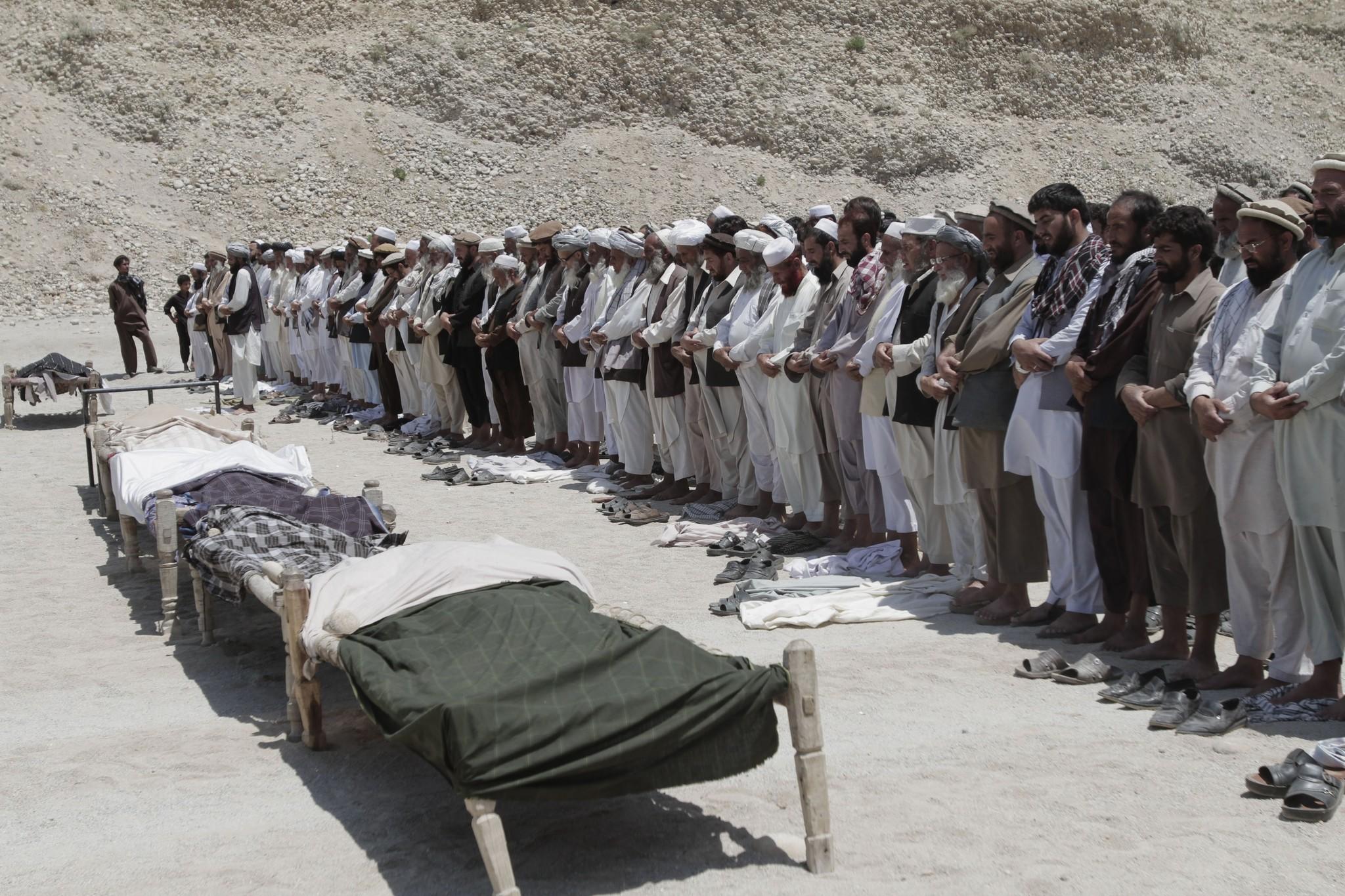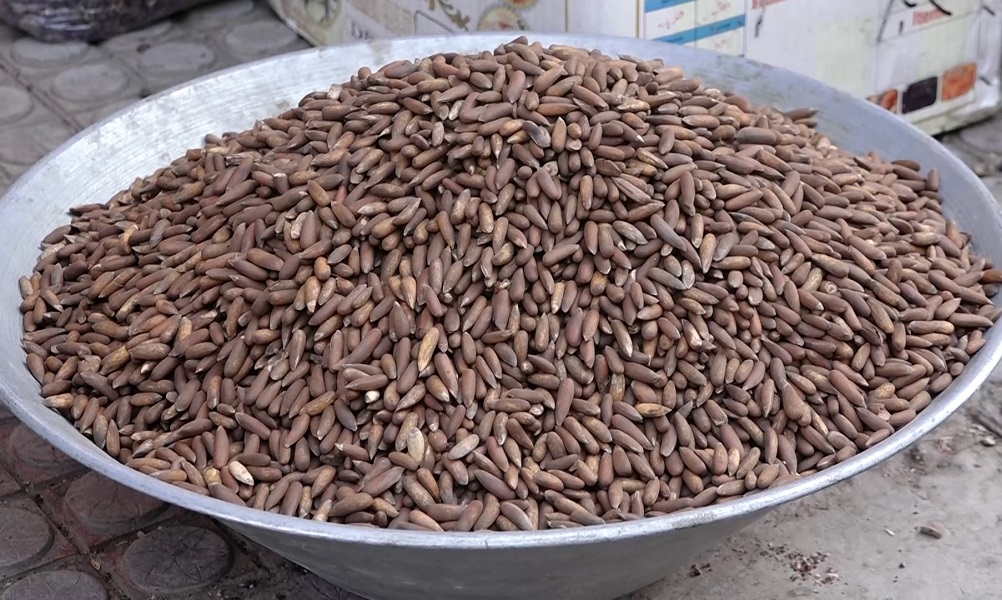Latest News
Civilian Deaths Still High in Afghanistan: UN Report

 The number of civilians killed and injured in the Afghanistan conflict during the first six months of 2017 persisted at the same record high levels as last year, the United Nations mid-year report said.
The number of civilians killed and injured in the Afghanistan conflict during the first six months of 2017 persisted at the same record high levels as last year, the United Nations mid-year report said.
According to figures from the UN Assistance Mission in Afghanistan (UNAMA), a total of 1,662 civilian deaths were confirmed between 1 January and 30 June – an increase of two per cent on the same period last year.
“The human cost of this terrible conflict in Afghanistan – loss of life, destruction and immense suffering – is far too high,” said Tadamichi Yamamoto, the Secretary-General’s Special Representative for Afghanistan and head of UNAMA. “The continued use of indiscriminate, disproportionate and illegal improvised explosive devices is particularly appalling and must immediately stop.”
The reports highlights that 40 per cent of all civilian casualties during the six-month period were killed or injured by anti-government forces using improvised explosive devices (IEDs), such as suicide bombs and pressure-plate devices, which were responsible for the deaths of 596 civilians and injured 1,483.
These figures include civilian casualties from suicide and complex attacks -involving more than one perpetrator and two or more forms of weaponry, including suicide IEDs- which killed 259 civilians and injured 892, a 15 per cent increase on comparable figures for the first six months of 2016.
The report makes a series of recommendations, including calling on anti-government forces to stop targeting civilians and to enforce directives from the Taliban leadership calling for an end to such attacks.
Government forces are urged not to use weapons including mortars and rockets which could have a devastating impact in civilian populated areas, and to disband illegal militias and similar groups. The report also recommends ongoing support from international military forces to support and train the Afghan national army.
The report commends Afghan security forces for their continued efforts to reduce civilian casualties resulting from ground engagements, which represent the second leading cause of deaths and injuries. The figures demonstrate a 10 per cent reduction in civilian casualties from ground engagements the first six months of 2017 compared to the same period last year, with 434 confirmed deaths and 1,375 injuries. The decrease is attributed to a reduction in casualties caused by indirect and/or explosive weapons, mostly mortars, used by pro-government forces.
UNAMA attributed a total of 327 civilian deaths and 618 injuries to pro-government forces, a 21 per cent decrease compared with the same period last year, although UNAMA noted a 43 per cent rise in civilian casualties during aerial operations (95 deaths and 137 injuries).
Nineteen per cent of the casualties occurred in the capital, Kabul, as a result of suicide and complex attacks. Civilian casualties increased in 15 of Afghanistan’s 34 provinces, mainly due to increased attacks by anti-government forces. The highest numbers of casualties occurred in Kabul, Helmand, Kandahar, Nangarhar, Uruzgan, Faryab, Herat, Laghman, Kunduz and Farah provinces.
The UN report includes only incidents which have been confirmed after a thorough verification process. This strict documentation process, which requires multiple steps of confirmation in each case, means that the overall figures are probably conservative.

Latest News
Afghanistan exported more than 2,500 tons of pine nuts in 1402
Afghan pine nut is mostly exported to China, India, Turkey and the United Arab Emirates.

The Ministry of Industry and Commerce says that in the past solar year (1402) more than 2,500 tons of pine nuts worth $27 million were exported to neighboring countries and beyond.
Afghan pine nut is mostly exported to China, India, Turkey and the United Arab Emirates.
“The total weight of black pine nut exports during 1402 was 2,523 tons and the value was $27 million, mostly to China, India, Pakistan, the United Arab Emirates, Saudi Arabia, Qatar, the United States, Britain, Australia, the Netherlands, and other countries,” said Abdul Salam Javad Akhundzada, the spokesman of the Ministry of Industry and Commerce.
Officials in the Ministry of Agriculture, Irrigation and Livestock say that since last year, pine nut production has increased in the country and they have also expanded artificial forests to harvest more pine nuts.
“In order to revive pine nut forests, according to last year's development budget, pine trees have been planted on approximately 1,500 hectares of land.
There used to be pine trees on these lands, but they were cut down or destroyed in a fire,” said Misbahuddin Mustain, the spokesperson of the Ministries of Agriculture, Irrigation and Livestock.
Experts say that currently China buys most of Afghanistan's pint nuts, but the government must find new markets so that it can be sold at a better price.
Latest News
IEA says deportation of Afghan migrants from neighboring countries has intensified

A committee of the High Commission for Addressing the Problems of Migrants said the process of forced expulsion of Afghan migrants from neighboring countries has intensified.
However, members of the committee emphasized, in their meeting with the Prime Minister's administrative deputy, that they have managed the resettlement of the returnees well in cooperation with relevant institutions.
In the meeting, Abdul Salam Hanafi, the administrative deputy prime minister, said that as winter approaches, committees should seek to ensure that the returnees will not face problems.
Experts say that the refugee hosting countries should treat Afghan migrants according to international laws, and take into account the current conditions of the country.
“To reduce immigration and increase economic stability, creating employment opportunities, increasing investment, giving various types of loans to people and issuing securities can be effective,” said Asifa Stanikzai, a migration expert.
Iranian officials have said that they deport 3,000 Afghan immigrants from the country every day and they plan to deport two million Afghan immigrants by the end of this year.
Forced deportation of Afghan migrants from Iran and Pakistan has been a serious challenge in the last three years, but according to experts, the Islamic Emirate has been able to manage the process to some extent.
Latest News
Iran executes 13 Afghans in October, 49 in total since January
Last month, Iran carried out at least 166 executions in October alone bringing the total in the first 10 months of 2024 to at least 651

Iran Human Rights reported this weekend that in the first 10 months of 2024, Iran has executed 49 Afghan nationals, 13 of whom were executed in October alone.
According to IHR, the number of executions of Afghan nationals has increased in the past three years.
In 2022, 16 Afghan nationals, including a juvenile offender and a woman, were executed.
In 2023, this number increased to 25.
This year, the trend has accelerated further.
IHR warned that Iran may take advantage of the rising conflict between Iran and Israel to escalate the number of executions in the coming months.
Last month, Iran carried out at least 166 executions in October alone bringing the total in the first 10 months of 2024 to at least 651.
This marks the highest number of executions recorded in a single month since Iran Human Rights began documenting executions in 2007.
Among those executed were the 13 Afghan nationals, six women, and an Iranian-German citizen.
The organization has called on the international community, media, and civil society to closely monitor and respond to what they say is an “alarming rise in executions”.
IHR also stated that since the presidential election and the recent escalation in Iran-Israel tensions, the number of executions has surged, with at least 353 people having been executed between August and October - since President Massoud Pezeshkian took office.
The Islamic Emirate of Afghanistan has not yet commented on the number of Afghan nationals executed.
The Iranian government does not disclose the number of Afghans it executes or the reasons behind most cases.
However, it is widely believed that a significant portion of these executions are related to drug charges.
Human rights organizations have criticized the Iranian government for conducting such executions, arguing that these actions violate international laws and the right to life.
Amnesty International says that the death penalty, without exception, constitutes a violation of the right to life as articulated in the Universal Declaration of Human Rights.
-

 Business4 days ago
Business4 days agoChina resumes direct rail trade with Afghanistan
-

 Regional5 days ago
Regional5 days agoLebanon, Israel could agree to ceasefire within days, Lebanese prime minister says
-

 Latest News4 days ago
Latest News4 days agoOIC special envoy meets with Pakistani officials for talks on Afghanistan
-

 Business4 days ago
Business4 days agoPrivate sectors of Afghanistan, Kazakhstan sign contracts worth $100 million
-

 Sport4 days ago
Sport4 days agoRashid Khan retained by Gujrat Titans ahead of IPL 2025 auction
-

 Regional4 days ago
Regional4 days agoIran preparing strike on Israel from Iraqi territory within days, Axios reports
-

 Latest News3 days ago
Latest News3 days agoDAB plans to set up electronic payments in Afghanistan
-

 Regional4 days ago
Regional4 days agoSeven killed, dozens injured in blast in Pakistan’s Balochistan province














